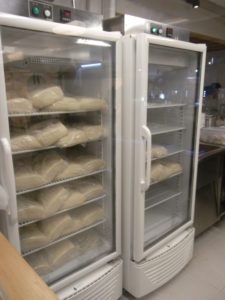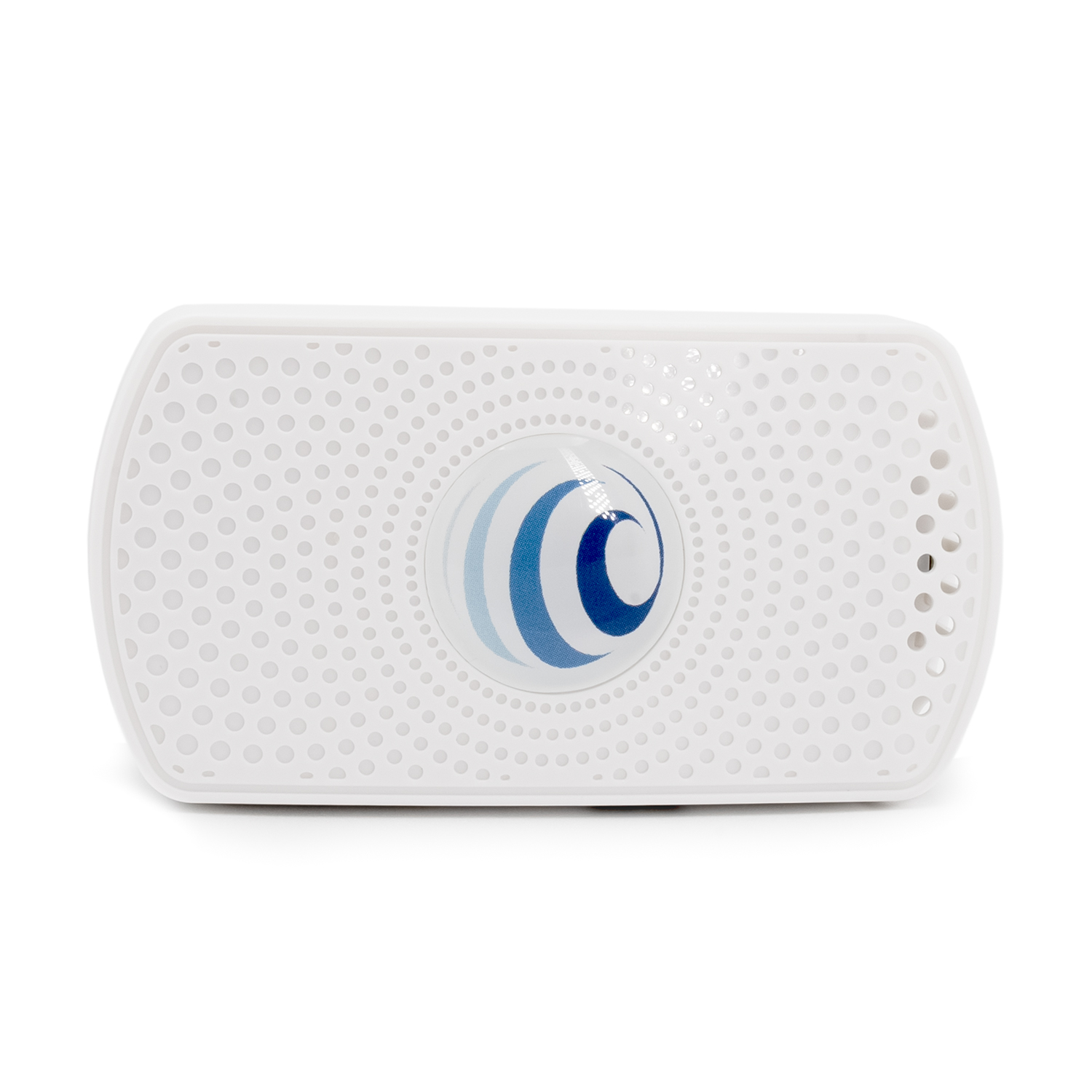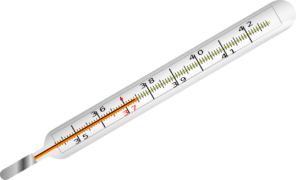Temperature Logging for Restaurants
In any restaurant, you’re required to maintain safe food temperatures. It’s more than a legal requirement, it’s something you should do to keep your customers and staff safe and healthy. Sometimes you’re lucky, and you notice a problem with your cold storage right away. But what about when there’s nobody there and you have an equipment failure?
It can turn into a disaster. In just a few hours, all your food stock can spoil, leaving your restaurant in a bad spot. Even worse, if your cold room malfunctions overnight, but comes back on by morning, you might never even know. Then, you’re stuck with unsafe food, and no idea that the food you’re serving isn’t safe.
What Can You Do?
Even if you do notice there’s a problem with your cold storage, it can really interrupt your business to say the very least. Food that isn’t properly stored also has to be disposed of. Of course, that means your business is done for at least the day while you restock your food supplies. It cuts into your food cost, and your revenue for the coming days.
So what can you do to prevent spoiled food?
A temperature logging system is the best thing you can do for your restaurant, and your business. Unlike your typical cold room thermometer, these temperature loggers take, and record, temperature readings every few minutes. Once they take a reading, it’s accessible in the cloud system, no matter where you are. You have recorded proof your food is always in the ‘safe zone.’
What About Emergencies?
That’s not the only reason to put a temperature logger in your cold storage. You can also prevent emergencies before they get to a critical level. Temperature loggers also alert you as soon as your cold storage reaches an unsafe level. Rather than waiting until your food is unsafe, you know you need to fix the problem immediately.
Whether you have an overnight service, general manager on call, or you take the alert yourself, it’s your first defense against a cold room failure.
Related:
Temperature Regulations in Restaurant and Food Delivery
In the food and hospitality industry, there are countless regulations you have to maintain to stay up to code. Some of the most important of these, however, include those related to food safety. If you’re not following these regulations, the food you serve or deliver can make customers sick. For cold foods, 40℉ or above is the danger zone. It takes as little as 20 minutes for bacteria to double their numbers on susceptible foods.
What can you do to keep food safe and prevent food waste?
Food Storage Guidelines
Food that needs to either be refrigerated or frozen should never be left at room temperature for two hours or more. While that is a solid guideline, that doesn’t guarantee the absence of bacteria.

Raw, uncooked foods aren’t your only area of concern, either. According to the USDA, “One of the most common causes of foodborne illness is improper cooling of cooked foods. Bacteria can be reintroduced to food after it is safely cooked.” That means that even your prepared food isn’t safe from bacteria and pathogens.
Any susceptible food needs refrigeration at 40 degrees fahrenheit or below. However, if the food is intended for frozen storage, it should be kept at 0 degrees fahrenheit.
Dry storage is another concern for restaurants and food providers. Even the pantry needs stable, regulated temperatures between 50 and 70 degrees fahrenheit. Not only that, but dry storage should have a humidity level of 15% or lower.
All food should have a clear marking with expiration dates, whether opened or not. If food packages are opened or contain prepared foods, the package should be dated as to when it was opened or prepared.
Maintaining Proper Food Storage
It’s not a new concept that food expires more quickly in improper conditions. However, you might not always know if your food is in poor shape until it’s too late. Food services should keep thermometers in cold storage (such as refrigerators and freezers) as well as their dry storage areas. However, when it comes to dry storage, it’s also important to monitor humidity. Most businesses do this by using a hygrometer (a device that measures relative humidity, or RH).
 For Restaurants
For Restaurants
Thermometers, hygrometers, and meat thermometers are the basic tools that restaurants use to maintain their food storage. However, these also need some human intervention. An employee has to check the devices to record temperatures. These devices also won’t tell you if there’s an issue in between the times they’re checked.
For Food Suppliers
Restaurants rely on food suppliers to deliver their most important stock: their food. That means that if food suppliers fail, so do the restaurants they’re working with. For food suppliers, maintaining proper food storage conditions is just as important as it is for restaurants. However, these suppliers also have to deal with the complications that arise when shipping that food. Many logistics companies use the same basic tools that restaurants do to monitor their storage conditions: thermometers and hygrometers. Much like with restaurants, the problem with these tools is that you won’t know if there’s a problem until it’s too late.
Updating Tools for Safety and Efficiency
Thermometers, whether analog or digital, are solid tools for measuring temperature. However, because they rely on people to check them, there’s a lot of room for error. When it comes to food safety, there really isn’t any margin for error. Digital thermometers are certainly an upgrade from the traditional types, as long as they’re regularly calibrated. Hygrometers are much the same.
Regulations on how often food storage temperatures vary. When working with the food, it’s a common recommendation that you check no less than every four hours, although two hours is optimal. When food is in cold storage however, the regulations are much like those for refrigerated vaccines: you need to verify the temperature at least twice per day (meaning at the beginning and ending of the day).
If you check only twice a day, there are plenty of opportunities for food to remain in the ‘danger zone’ and ultimately spoil. You might chance upon a temperature issue when you check your thermometer. However, there’s an even greater chance that cold storage equipment can fail to maintain temperatures, and go unnoticed. Even in food transport, this is a risk. You should check food packages before loading, and after unloading. Again, this still allows some room for improper temperatures.
What to Use Instead:
New technology means that we no longer need to rely on the classic thermometer or hygrometer. It also means that we don’t need to designate someone to check and record food storage temperatures.
What should you use instead?
A smart, efficient sensor.
The iMatrix sensor is an ideal example. With a single device, you can keep an eye on temperature and humidity all day, without any effort on your part. This sensor can measure temperatures from as low as -40 degrees Fahrenheit up to 158 degrees fahrenheit. It works to measure up to 100% relative humidity, and stores logs, whether or not you connect it to the iMatrix cloud system. The sensor is ideal for TCS (temperature control safety) storage, whether you keep it in your food freezer, refrigerator, or in dry storage.

What about food suppliers?
Luckily, the iMatrix sensor works just as well during transport as it does in restaurant food storage. As we mentioned, you don’t need a wireless connection for the sensor to take and store readings. When your food reaches the destination, take the sensor out, and connect it to the cloud system. Within moments you have a complete log of the conditions throughout your food package’s journey at your fingertips. This is especially crucial for food suppliers that must prove they maintain suitable conditions, both for the restaurants they supply, and their local regulatory bodies.
Getting a temperature and humidity reading every minute far exceeds the recommendations to check food storage twice a day. Not only that, you also don’t have to rely on an employee to diligently check conditions. In the end, you save time, money, labor, and ultimately, valuable food stock.

 For Restaurants
For Restaurants